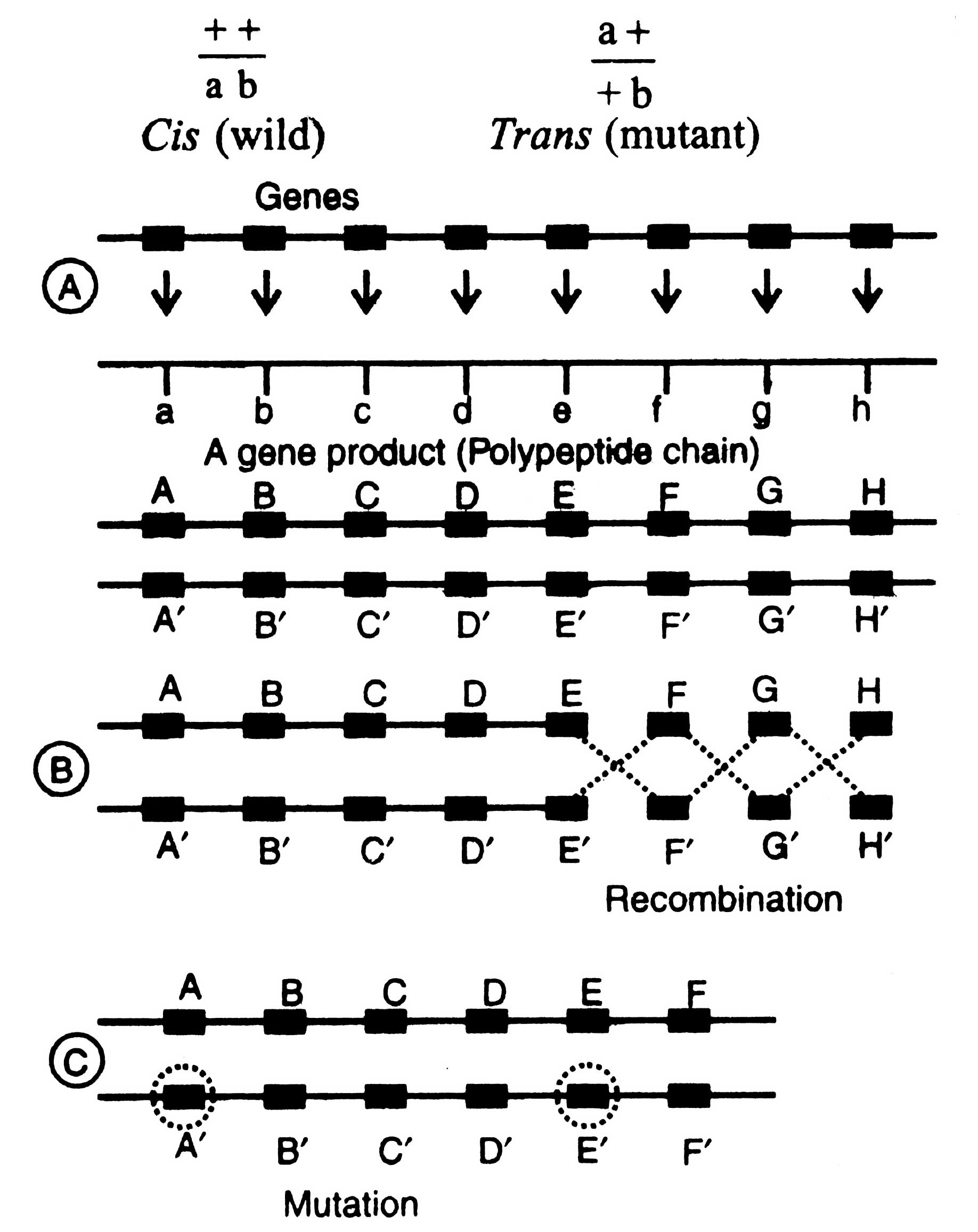Units of a Gene
Cistron
One-gene-one enzyme hypothesis of Beadle and Tatum was redefined by several workers in coming years. A single mRNA is transcribed by a single gene. Therefore, one-gene-one mRNA hypothesis was put forth. Exceptionally, a single mRNA is also transcribed by more than one gene and it is said to be polycistronic. Therefore, the concept has been given as one-gene-one protein hypothesis. The proteins are the polypeptide chain of amino acids translated by mRNA. Therefore, it has been correctly used as one-gene-one polypeptide hypothesis.
Recon
Earlier, it was thought that crossing over occurs between two genes. In 1962, Benzer demonstrated that the crossing over or recombination occurs within a functional gene or cistron. In a cistron the recombinational units may be more than one. Thus, the smallest unit capable of undergoing recombination is known as recon (Fig. 2.6B).

Fig. 2.6. The genes as a unit of function i.e. cistron (A), recombination i.e. recon (B) and mutation i.e. muton (C)
Benzer (1955) found that the cultures of T4 bacteriophage formed plaques on agar plates of Eshcherchia coli. Normal T4 formed small plaques of smooth edges, whereas die mutant T4 phagc formed the larger plaques of rough edges. The DNA molecule of T4 phage consists of several genes one of which is called rll region. Formation of rough edged plaques was governed by two adjacent genes (cistrons rIIA and rIIB) in mutant bacteriophage. Both the regions function independently and consist of 2,500 and 1,500 nucleotides, respectively. In rIIA gene over 500 mutational sites are present where crossing over may occur. Through crossing over exchange of two segments of DNA occurs. If crossing over takes place within the gene, by mating two rII mutant of T4 phage a normal wild type phage can be produced. Thus, the work of Benzer lends support that crossing over within a gene occurs, which explains that the recombinational unit (recon) is much less smaller than the functional unit i.e. cistron.
Benzer (1962) coined the term mutan to denote the smallest unit of chromosome that undergoes mutational changes. Hence, mutan may be defined as 'the smallest unit of DNA which may be changed in the nudeotide. Thus, changes at nucleotide level are possible (Fig. 2.6C). The smallest unit of mutan is the nucleotide. Therefore, cistron is largest unit in size followed by recon and mutan. This can be explained that a gene consists of several cistron, a cistron contains many recon, and a recon a number of mutans. However, if the size of a recon is equal to mutan, there would be no possibility in recon for consisting of several mutans.




